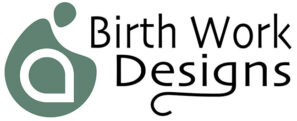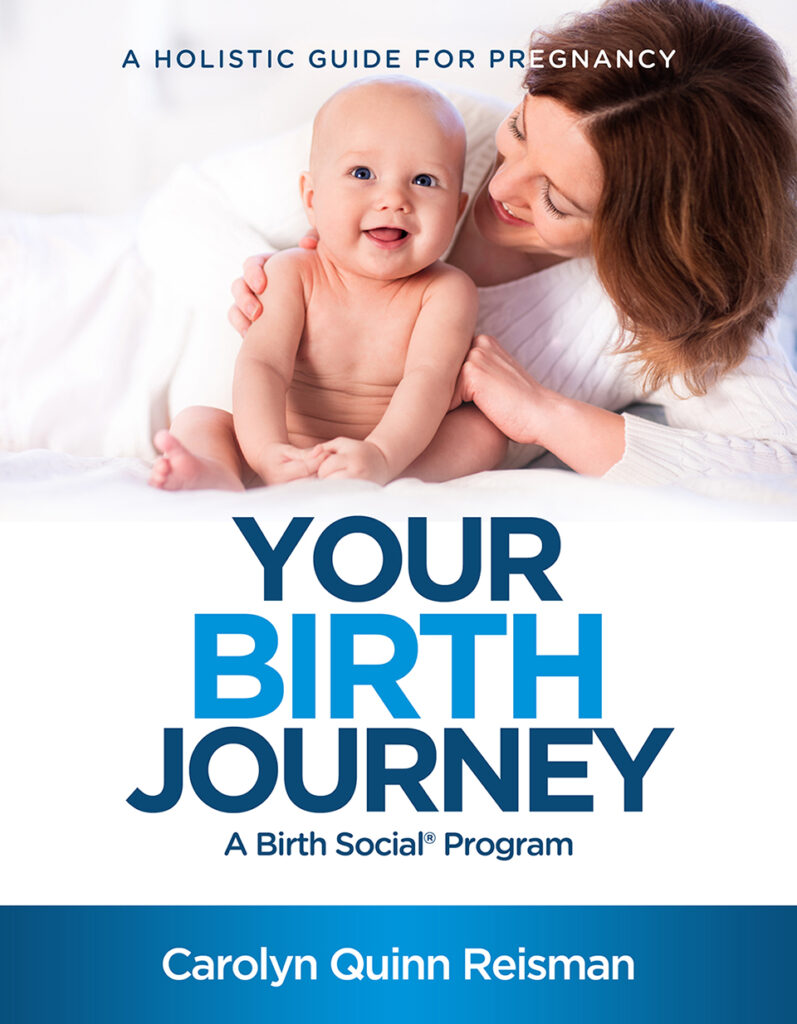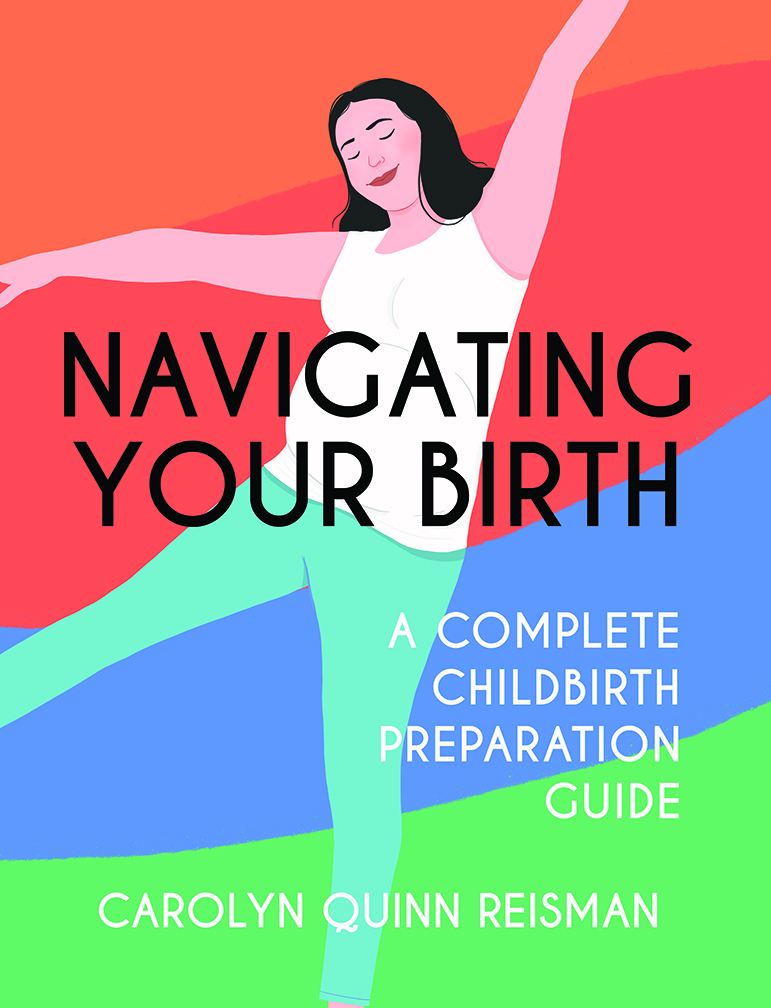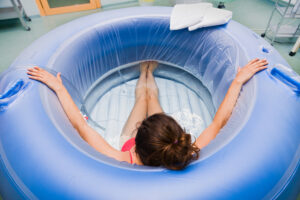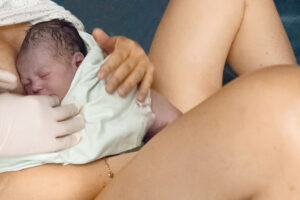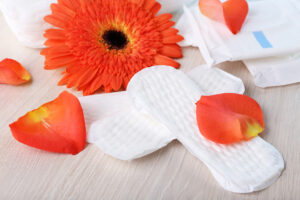Since you will be using menstrual pads after the birth of your child, anywhere from four to six weeks, choosing menstrual pads is a big deal! If you are used to using menstrual pads, you know that large pads are used for a heavy flow, and regular to thin pads are used for a light flow. It is the same for postpartum bleeding, except bleeding can be much heavier than a regular menstrual flow for the first few days after giving birth. For that reason, moms use disposable pull-up adult diapers or large, overnight pads.
What you may not know is that most menstrual pads on the market are filled with chemicals. From about the age of twelve to the age of fifty, women are exposed to feminine hygiene products every month. That adds up. If you are used to using tampons before coming pregnant, you face the same exposure.
Many women have turned to menstrual cups, organic tampons, organic disposable pads, or cloth pads because of exposure to toxins in menstrual products. Of course, you can’t use a menstrual cup or tampons postpartum, but you do have a few choices regarding menstrual pads. But, first, let’s talk about postpartum bleeding.
Postpartum Bleeding
The blood flow after you give birth is called lochia (a.k.a.postpartum bleeding) and consists of the mucous membrane that lines the uterus, as well as blood. Postpartum bleeding lasts anywhere from four to six weeks, being heavier in the first few days and then gradually decreasing to a thin discharge. This is what you can expect:
- 0 to 5 days after birth – heavy bleeding. You will need overnight pads or adult diapers: Postpartum bleeding is dark red, heavy, and may contain some clots. If you soak a large menstrual pad in less than one hour or see clots larger than a plum, call your provider. Heavy bleeding can go longer than five days for some women.
- 5 to 14 days after birth – moderate bleeding. You may need heavy, regular, or thin size pads: Postpartum bleeding starts to lighten up and become thinner. It may be pinkish-red or brownish in color. If it turns bright red, it means you are doing too much. You may still have a few small clots.
- 14 days to 6 weeks postpartum – light bleeding. You will need regular size pads, thin pads, or panty liners: The discharge can be brownish, pinkish-red, whitish, or yellowish and eventually tapers off. The discharge can be sporadic. No more clots should appear.
Every woman is different. I have seen women in my midwifery practice with heavy bleeding that lasts a week, while others are using a thin pad on day five. As you can see, having a few pad sizes will help you feel the most comfortable. By the time your discharge becomes light, you probably don’t want a big bulky pad between your legs.
Natural, Disposable Pads
Overnight pads can be found anywhere, but if you prefer to use natural products without harmful chemicals, check these options out.
Chemical Free Overnight Sanitary Pads
- Seventh Generation Overnight Pads With Wings
- Naturacare Maternity Pads
- Organyc 100% Cotton Pads With Wings (Heavy)
Cloth Menstrual Pads
If you are not familiar with cloth sanitary pads, they are made of an absorbable cloth material and feel much softer on your bottom than disposables. I used cloth pads for most of my adult life, and loved them! Back then, the only pads available were made from muslin shells that came with cotton inserts. Today, selecting cloth pads is akin to selecting cloth diapers. You have a huge variety to choose from! Unlike cloth diapers, you will not outgrow your need to use cloth pads. They are useful for future pregnancies and any time you want to use a pad during your regular menstrual cycles.
You can find menstrual cloth pads on Amazon, Etsy, or specialty shops. My favorite? Pampered Shop Cloth Pads on Etsy.
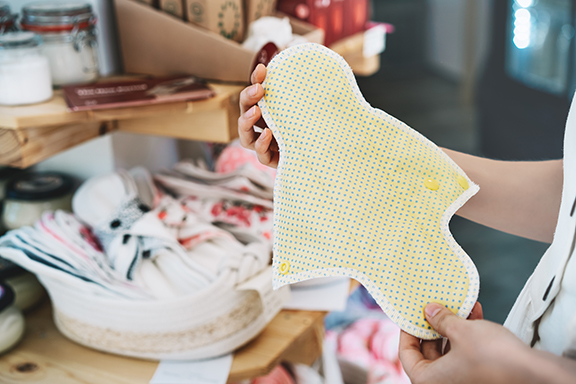
The Thing About Postpartum Cloth Pads
Cloth pads come in a variety of colors. The darker the color, the more difficult it is to see the color or amount of blood on the pad. Providers have a thing about blood loss and get a bit twitchy if they can’t see how much blood is on your pad. I have received dozens of phone calls about postpartum bleeding over my career and always ask the same questions. “How much? What is the color? Send me a picture.” Purchase light colored pads for the first few days of a heavy flow so that you and your provider can assess blood flow.
Caring for Cloth Pads
When you switch from disposable products to soft cloth for your bottom, the trade-off is you have to deal with laundry. Not a big deal. To start, pre-wash all of your cloth pads 2-3 times in fragrance-free laundry detergent before use. Do not use fabric softener. Hang them to dry or tumble dry – no dryer sheets. When you are using them, follow these few simple steps:
If you let your pads sit, they will stain. When you are changing any type of cloth pad, taking care of them immediately will help them to stay fresher.
- Rinse. Rinse the cloth immediately in cold water until most of the blood is gone. Don’t worry about getting all the blood out. Some people recommend soaking first, then rinsing. I’m not too fond of the idea of a bucket full of watery blood. I recommend rinsing soiled material first, applying a stain remover (hydrogen peroxide) – then soaking.
- Hydrogen peroxide spray. After rinsing, spray the pad with hydrogen peroxide, rub the cloth for a few seconds until most of the remaining blood is gone, then throw it in a bucket to soak.
- Soak. Soak in cold water until the next time you get up to change a pad. Wring the pad out after soaking to prepare for washing.
- Hand wash or throw in washer. At the end of the day (or every other day), hand-wash your pads or throw them in the washer with the rest of your laundry or with your baby’s cloth diapers. Hang to dry or tumble dry on low heat.
Cloth Pads for the First Week Postpartum
The first few days after birth, you will need overnight or heavy cloth pads, or adult diapers. After that, you can switch to regular size cloth pads.
Cloth Adult Diaper Shell and Inserts
There is a lot of talk about disposable pull-up adult diapers for postpartum bleeding, but barely any mention about adult cloth diapers. Why settle for uncomfortable disposable diapers when you can choose a shell and cloth inserts? You can purchase a shell on Amazon and ten liners for an affordable price.
- Adult Diaper Shell with Velcro.
- Ten microfiber inserts (7.8 X 19.2 inches)
The bright side of using cloth adult diapers? They prevent leaks. Remember, these are designed for incontinence, so they can handle heavy bleeding. Unlike a pad placed in your underwear that can slide around, the diaper stays in place. Even though the initial cost is more than disposable pull-ups, you can use them again for future pregnancies. Plus, they come in a lot of colors and designs and are way cuter than disposable pull-ups!
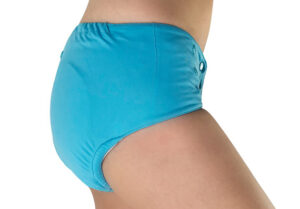
Postpartum Ice Pads
You may appreciate the Pampered Shop Postpartum Ice Pads. They are especially nice because they have pockets you can put reusable ice packs in (ice packs come with the pads). They can also be used without the ice packs. If you are bleeding heavily, they may leak, so change them frequently. The benefit of the Postpartum Ice Pads is you can continue using them after the first week and for your menstrual care.
Select the “Natural Mix – No Dyes” for easy blood loss assessment.
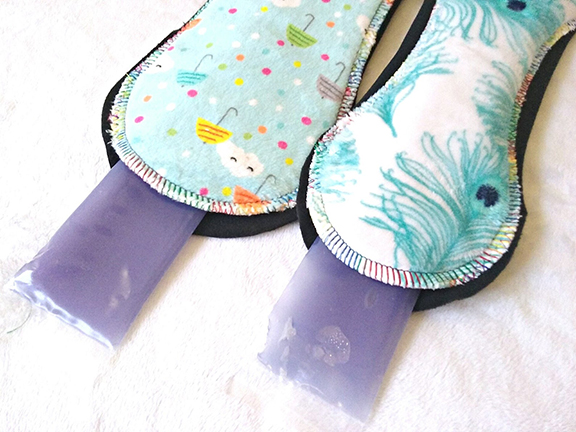
Cloth Pads After One Week Postpartum and Beyond
By the time you are able to use regular and light flow cloth pads, it doesn’t matter what colors you choose. By then, concerns over assessing blood loss are in the past. Also, you will need an assortment of pads for moderate to light days. Several companies make menstrual cloth pads and offer regular size and light cloth pads.
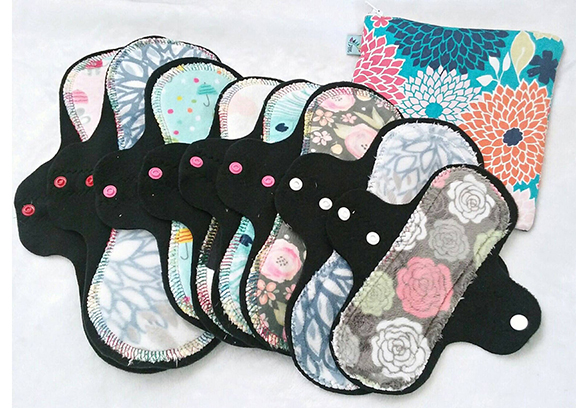
Can I Make Padsicles With Cloth Pads?
Bienkowski, B. (2019, January 28). How diapers and menstrual pads are exposing babies and women to hormone-disrupting, toxic chemicals. Environmental Health News.
Burns, C. (2019, March 15). Elevated Levels of Toxic Chemicals Found in Menstrual Pads and Disposable Diapers. Environmental Working Group.
Swanson, S. (2020, March 6). Endocrine-Disrupting Chemicals Found in Menstrual and Genital Care Products. Environmental Working Group.
